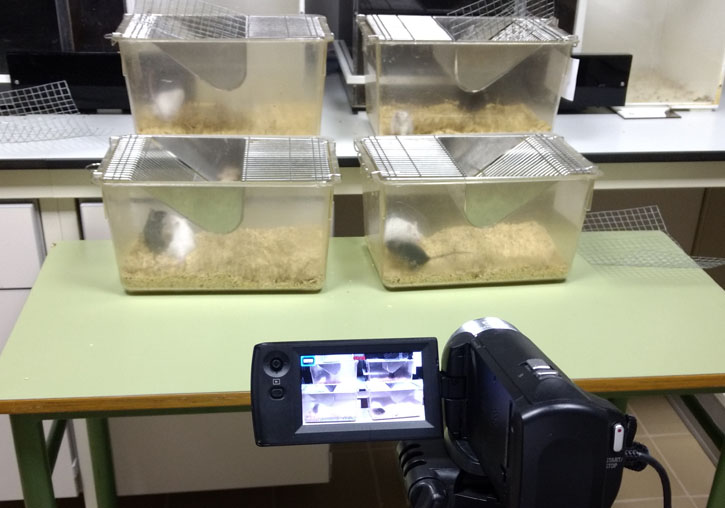The effects of stress in mice, a tool to assess whether people are more prone to drug use in adulthood
- Scientific Culture and Innovation Unit
- June 1st, 2021

The Psychobiology of Drug Addiction Research Unit of the University of Valencia, in collaboration with the Pompeu Fabra University of Barcelona, has analysed the neuroinflammatory and behavioural susceptibility profile of mice exposed to social stress, and how they have reacted to the effects of cocaine. The study presents an innovative classification technique based on whether mice are susceptible or resilient to stress, called SWR. In addition, the results could be evaluated in people in subsequent clinical research.
The whole approach of this preclinical study is designed for clinical psychology – in charge of mental health and adaptive behaviour of people – to collect the results and try to confirm whether the same thing that happens to the mouse can happen to a person. “Some articles already indicate that this parallelism exists, but now it is clinical research that must study these specific results”, explains Raúl Ballestín, researcher of the Department of Psychobiology and the first author of the article.
To this end, the study, published in the journal Progress in Neuro-Psychopharmacology & Biological Psychiatry, has several phases of research. On the one hand, it has divided the experimental mice into two groups, depending on whether they are resilient or susceptible to stress, through a new technique in this area: the SWR (social withdrawal ratio). In previous studies, in this type of analysis, the behaviours of the animals were recorded on video for later evaluation by the researcher.
“We used the video to be able to compare the groups, but we also used the SWR, which consists of putting a mouse in a box and, adjacent to it, there is a compartment that may be empty or where there may be another male mouse similar to one that had previously attacked him, to see if they are resilient or not to this stress”, explains the author. This method is done by the computer and is therefore more accurate, in order to avoid the bias of the researcher. As Ballestín defines it, “it’s a double check method”.
The author explains that when the mouse tries to defend its space and they put another mouse to overcome it psychologically, they observe if it is susceptible to stress because it will corner anxiously. “In the end it’s what happens to a child who is being bullied, for example, and when he gets home he still feels cornered”, the researcher compares.
On the other hand, the article has focused on the consequences of these experiences in adulthood. To do this, it has been observed what changes there are in the immune system of the animal’s brain and see if after some time it has a propensity to fall into the use of addictions such as cocaine. In this regard, they concluded that stress-susceptible mice showed an increase in the rewarding effects of cocaine. The researcher points out that they could have analysed the effects of another drug, “not necessarily cocaine, because in the end the interesting thing is to study addiction”.
Moreover, according to the author, “usually people who have suffered from stress in adolescence, in addition to having the pejorative effects per se, are also more prone to drug use”.
The two paradigms of the study
To study the effects of cocaine on mice, as it is basic science with animals and they cannot communicate in the same way that people, authors have used two paradigms. On the one hand, a small surgery has been done on the mice to see if, after a little training, the mouse is motivated enough and it will pull a lever to receive a dose of cocaine. So they have checked if there are differences between resilient and susceptible ones when consuming.
On the other hand, place preference conditioning has been used, which consists of putting two boxes of different colour, injecting 1.5 mg of cocaine and putting the mouse in a specific box. If you let go of the mouse and it returns to this box, it is because it associates the pleasurable effect of cocaine with the box, in the same way that humans could do.
Article: Ballestín, R.; Alegre-Zurano, L.; Ferrer-Pérez, C.; Cantacorps, L.; Miñarro, J.; Valverde, O.; Rodríguez-Arias, M. Neuroinflammatory and behavioral susceptibility profile of mice exposed to social stress towards cocaine effects. Prog. Neuropsychopharmacol. Biol. Psychiatry 2021, 105, 110123. https://doi.org/10.1016/j.pnpbp.2020.110123















